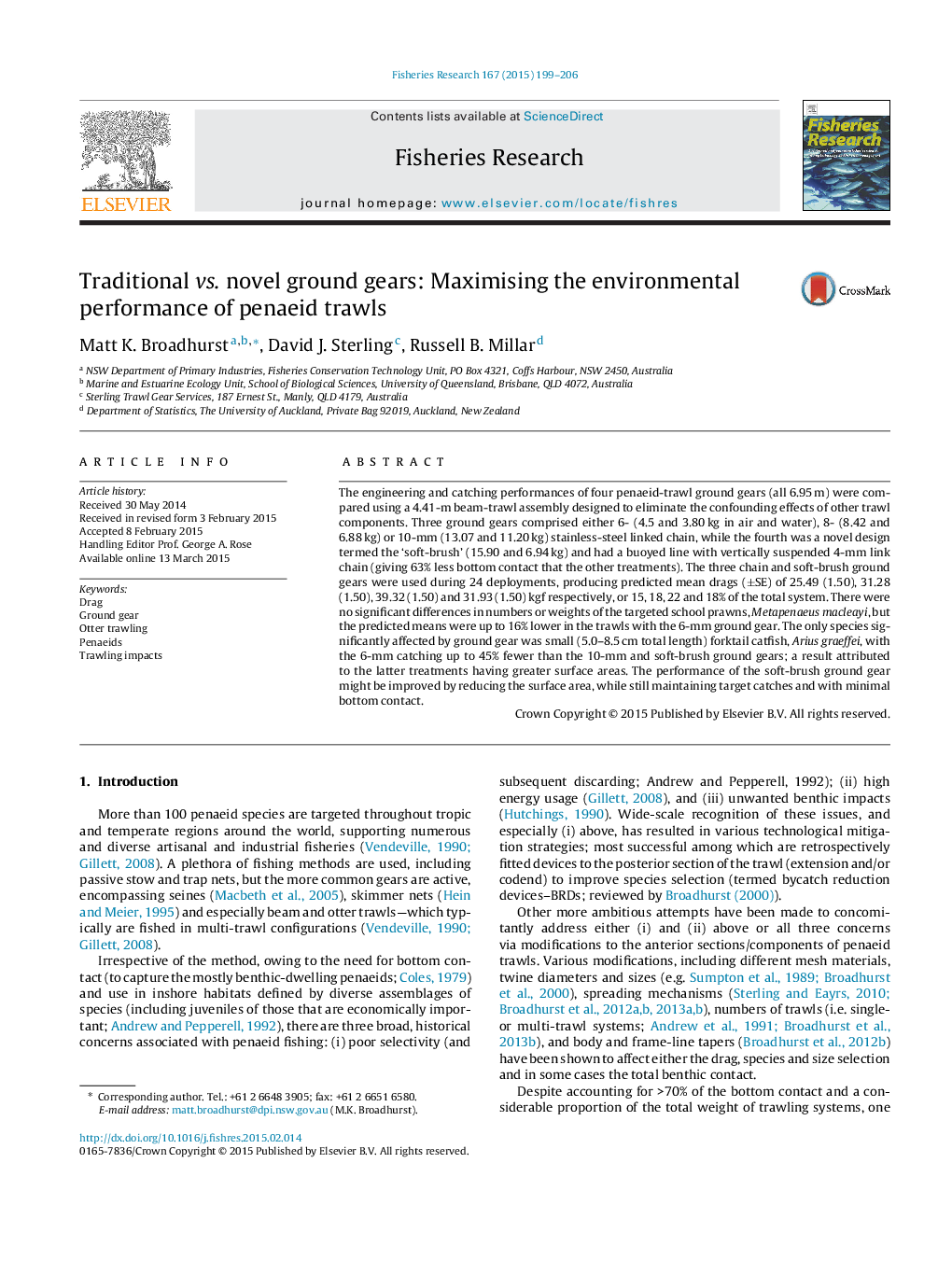| Article ID | Journal | Published Year | Pages | File Type |
|---|---|---|---|---|
| 4542906 | Fisheries Research | 2015 | 8 Pages |
The engineering and catching performances of four penaeid-trawl ground gears (all 6.95 m) were compared using a 4.41-m beam-trawl assembly designed to eliminate the confounding effects of other trawl components. Three ground gears comprised either 6- (4.5 and 3.80 kg in air and water), 8- (8.42 and 6.88 kg) or 10-mm (13.07 and 11.20 kg) stainless-steel linked chain, while the fourth was a novel design termed the ‘soft-brush’ (15.90 and 6.94 kg) and had a buoyed line with vertically suspended 4-mm link chain (giving 63% less bottom contact that the other treatments). The three chain and soft-brush ground gears were used during 24 deployments, producing predicted mean drags (±SE) of 25.49 (1.50), 31.28 (1.50), 39.32 (1.50) and 31.93 (1.50) kgf respectively, or 15, 18, 22 and 18% of the total system. There were no significant differences in numbers or weights of the targeted school prawns, Metapenaeus macleayi, but the predicted means were up to 16% lower in the trawls with the 6-mm ground gear. The only species significantly affected by ground gear was small (5.0–8.5 cm total length) forktail catfish, Arius graeffei, with the 6-mm catching up to 45% fewer than the 10-mm and soft-brush ground gears; a result attributed to the latter treatments having greater surface areas. The performance of the soft-brush ground gear might be improved by reducing the surface area, while still maintaining target catches and with minimal bottom contact.
